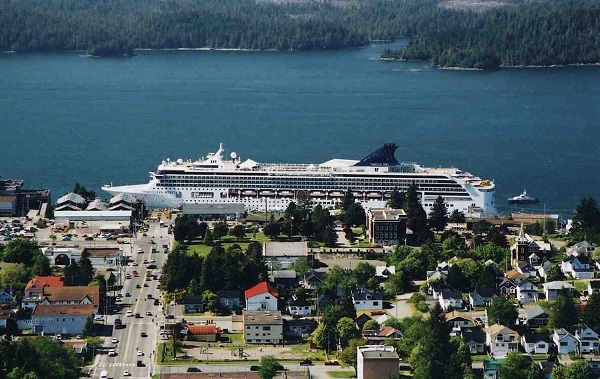Energy
When Vancouver reverses ban on natural gas appliances, it’s time to talk about energy choices

From EnergyNow.ca
By Stewart Muir of Resource Works
More News and Views From Resource Works Here
The Practicality of Energy Choice in Vancouver
Vancouver’s decision to reverse the ban on natural gas appliances in new homes should serve as the beginning of a necessary conversation about energy system choices
In a city like Vancouver, where the mountains meet the sea and the urban skyline reflects both our history and our aspirations, policy decisions are often a reflection of our values. Yet, sometimes, even the best intentions can lead us down a perilous path. The recent decision by the City of Vancouver to restore freedom of choice for heating water and space in our homes, reversing an earlier ban on natural gas, is a move I support.
Housing affordability was a major deciding factor, but to me this turn of events – one the nation is watching – also marks a step away from a simplistic and potentially regressive approach to climate action, one that could have stymied our efforts to decarbonize in a meaningful way.
Let me be clear: climate change is real, and the need to reduce emissions is urgent. However, the original gas ban, while well-intentioned, was not the answer. Banning natural gas from our homes might have seemed like a bold move, but it ignored the nuances of our energy system and the challenges we face in transitioning to a low-carbon future.
The gas ban was a decision that felt good for those deeply concerned about climate action; a personal stand against fossil fuels. But feelings alone do not build resilient energy systems, nor do they account for the complex interplay of technologies and fuels that will be necessary to achieve our climate goals. Natural gas, particularly when blended with renewable gases like hydrogen, can and should play a role in our energy future. The idea of banning it outright was akin to throwing the baby out with the bathwater.
Consider this: hydrogen, a zero-emissions fuel, is already the focus of enormous national and international investment. Canada is positioning itself as a leader in hydrogen production and technology, recognizing its potential to decarbonize sectors that are otherwise difficult to electrify. Banning natural gas infrastructure would have made it difficult, if not impossible, to integrate hydrogen into our energy mix when the technology matures.
Similarly, renewable natural gas, produced from organic waste, relies on the very distribution networks that a gas ban would have dismantled. The infrastructure for delivering gas to our homes is not a relic of the past but a vital component of our future energy system, one that could deliver clean, low-carbon fuels to millions of Canadians.
Let’s not forget the practical realities of energy demand. Suppose gas was revoked as an option for homes in Canada; the energy required to replace it would necessitate the entirety of our current solar and wind capacity several times over. This is not hyperbole—it’s a fact. And it doesn’t even account for the intermittency of these renewable sources, which means they cannot be relied upon to meet demand at all times.
In British Columbia, we’re already seeing the strain on our electricity system. We’ve become net importers of electricity, a situation that underscores the limits of our current infrastructure. As demand continues to rise—for electric vehicles, air conditioning, and the energy-hungry applications of artificial intelligence—our grid is buckling under the pressure. Tens of billions of dollars in upgrades are required, and these projects will take years to complete. Meanwhile, our neighboring provinces and states are facing similar challenges, leading to a regional energy crunch.
This diagram of Canada’s energy system provides, under close examination, a sober realization of how things work:

There is a lot to take in here, showing as it does the sources of all the energy in Canadian life (on the left) and how they flow into particular uses (right).
In grey shading on the right, the box labelled “Rejected Energy” represents energy that goes to waste. It is a staggering five times the amount of all types of energy used in our homes. I can understand that this area of high potential is hard to create excitement about. Nonetheless, it is a real source of ongoing progress, represented by ever more efficient ways of using fuels and upgrading equipment, and we aren’t talking about it.
Energy experts understand that banning a single type of energy without considering the broader system is not just imprudent; it’s dangerous. It could lead to shortages, higher costs, and ultimately, a failure to achieve our climate goals. Yet, I also recognize the appeal of actions that seem to offer immediate, tangible results. There’s a strong emotional pull in taking control of what happens in our own homes, in feeling like we’re doing our part.
This is why I’m calling for more energy education and diverse conversations that are constructive, respectful, and grounded in reality. We need to move beyond the tired narrative of “faceless corporations” versus the environment. The truth is, the people in both policy and industry are striving for the same outcome: a world with lower emissions and better outcomes for all.
The City of Vancouver’s decision to reverse the gas ban is a wise one, but it should be just the beginning. I urge the city to initiate a robust process of energy education, one that equips residents with the knowledge they need to make informed decisions about their energy use. And as a resident of this city, I am more than willing to take part in this vital conversation.
Our future depends on it.
Stewart Muir is the Founder and CEO of Resource Works.
Business
Inflation Reduction Act, Green New Deal Causing America’s Energy Crisis


From the Daily Caller News Foundation
By Greg Blackie
Our country is facing an energy crisis. No, not because of new demand from data centers or AI. Instead, it’s because utilities in nearly every state, due to government imposed “renewable” mandates, self-imposed mandates, and the supercharging of the Green New Scam under the so-called “Inflation Reduction Act,” have been shutting down vital coal resources and building out almost exclusively intermittent and costly resources like solar, wind, and battery storage.
President Donald Trump understands this, and that is why on day one of his administration he declared an Energy Emergency. Then, a few months later, the President signed a trio of Executive Orders designed to keep our “beautiful, clean coal” burning and providing the reliable, baseload, and affordable electricity Americans have benefitted from for generations.
Those orders have been used to keep coal generation online that was slated to shut down in Michigan and will potentially keep two units operating that were scheduled to shut down in Colorado this December. In Arizona, however, the Cholla Power Plant in Navajo County was shuttered by the utility just weeks after Trump explicitly called out the plant for saving in a press conference.
Dear Readers:
As a nonprofit, we are dependent on the generosity of our readers.
Please consider making a small donation of any amount here.
Thank you!
Unlike states with green mandates, Arizona essentially has none. Instead, our utilities, like many around the country, have self-imposed commitments to go “Net Zero” by 2050. To meet that target, they have planned to shut down all coal generation in the state by 2032 and plan to build out almost exclusively solar, wind, and battery storage to meet an expected explosive growth in demand, at a cost of tens of billions of dollars. So it is no surprise that like much of the rest of the country, Arizona is facing an energy crisis.
Taking a look at our largest regulated utilities (APS, TEP, and UNS) and the largest nonprofit utility, SRP, future plans paint an alarming picture. Combined, over the next 15 years, these utilities expect to see demand increase from 19,200 MW to 28,000 MW. For reference, 1,000 MW of electricity is enough to power roughly 250,000 homes. To meet that growth in demand, however, Arizonans will only get a net increase of 989 MW of reliable generation (coal, natural gas, and nuclear) compared to 22,543 MW (or nearly 23 times as much) of intermittent solar, wind, and battery storage.
But what about all of the new natural gas coming into the state? The vast majority of it will be eaten up just to replace existing coal resources, not to bring additional affordable energy to the grid. For example, the SRP board recently voted to approve the conversion of their Springerville coal plant to natural gas by 2030, which follows an earlier vote to convert another of their coal plants, Coronado, to natural gas by 2029. This coal conversion trap leaves ratepayers with the same amount of energy as before, eating up new natural gas capacity, without the benefit of more electricity.
So, while the Arizona utilities plan to collectively build an additional 4,538 MW of natural gas capacity over the next 15 years, at the same time they will be removing -3,549 MW (all of what is left on the grid today) of coal. And there are no plans for more nuclear capacity anytime soon. Instead, to meet their voluntary climate commitments, utilities plan to saddle ratepayers with the cost and resultant blackouts of the green new scam.
It’s no surprise then that Arizona’s largest regulated utilities, APS and TEP, are seeking double digit rate hikes next year. It’s not just Arizona. Excel customers in Colorado (with a 100% clean energy commitment) and in Minnesota (also with a 100% clean energy commitment) are facing nearly double-digit rate hikes. The day before Thanksgiving, PPL customers in Rhode Island (with a state mandate of 100% renewable by 2033) found out they may see rate hikes next year. Dominion (who has a Net Zero by 2050 commitment) wanted to raise rates for customers in Virginia by 15%. Just last month, regulators approved a 9% increase. Importantly, these rate increases are to recover costs for expenses incurred years ago, meaning they are clearly to cover the costs of the energy “transition” supercharged under the Biden administration, not from increased demand from data centers and AI.
It’s the same story around the country. Electricity rates are rising. Reliability is crumbling. We know the cause. For generations, we’ve been able to provide reliable energy at an affordable cost. The only variable that has changed has been what we are choosing to build. Then, it was reliable, dispatchable power. Now, it is intermittent sources that we know cost more, and that we know cause blackouts, all to meet absurd goals of going 100% renewable – something that no utility, state, or country has been able to achieve. And we know the result when they try.
This crisis can be avoided. Trump has laid out the plan to unleash American Energy. Now, it’s time for utilities to drop their costly green new scam commitments and go back to building reliable and affordable power that generations to come will benefit from.
Greg Blackie, Deputy Director of Policy at the Arizona Free Enterprise Club. Greg graduated summa cum laude from Arizona State University with a B.S. in Political Science in 2019. He served as a policy intern with the Republican caucus at the Arizona House of Representatives and covered Arizona political campaigns for America Rising during the 2020 election cycle.
Automotive
Politicians should be honest about environmental pros and cons of electric vehicles

From the Fraser Institute
By Annika Segelhorst and Elmira Aliakbari
According to Steven Guilbeault, former environment minister under Justin Trudeau and former member of Prime Minister Carney’s cabinet, “Switching to an electric vehicle is one of the most impactful things Canadians can do to help fight climate change.”
And the Carney government has only paused Trudeau’s electric vehicle (EV) sales mandate to conduct a “review” of the policy, despite industry pressure to scrap the policy altogether.
So clearly, according to policymakers in Ottawa, EVs are essentially “zero emission” and thus good for environment.
But is that true?
Clearly, EVs have some environmental advantages over traditional gasoline-powered vehicles. Unlike cars with engines that directly burn fossil fuels, EVs do not produce tailpipe emissions of pollutants such as nitrogen dioxide and carbon monoxide, and do not release greenhouse gases (GHGs) such as carbon dioxide. These benefits are real. But when you consider the entire lifecycle of an EV, the picture becomes much more complicated.
Unlike traditional gasoline-powered vehicles, battery-powered EVs and plug-in hybrids generate most of their GHG emissions before the vehicles roll off the assembly line. Compared with conventional gas-powered cars, EVs typically require more fossil fuel energy to manufacture, largely because to produce EVs batteries, producers require a variety of mined materials including cobalt, graphite, lithium, manganese and nickel, which all take lots of energy to extract and process. Once these raw materials are mined, processed and transported across often vast distances to manufacturing sites, they must be assembled into battery packs. Consequently, the manufacturing process of an EV—from the initial mining of materials to final assembly—produces twice the quantity of GHGs (on average) as the manufacturing process for a comparable gas-powered car.
Once an EV is on the road, its carbon footprint depends on how the electricity used to charge its battery is generated. According to a report from the Canada Energy Regulator (the federal agency responsible for overseeing oil, gas and electric utilities), in British Columbia, Manitoba, Quebec and Ontario, electricity is largely produced from low- or even zero-carbon sources such as hydro, so EVs in these provinces have a low level of “indirect” emissions.
However, in other provinces—particularly Alberta, Saskatchewan and Nova Scotia—electricity generation is more heavily reliant on fossil fuels such as coal and natural gas, so EVs produce much higher indirect emissions. And according to research from the University of Toronto, in coal-dependent U.S. states such as West Virginia, an EV can emit about 6 per cent more GHG emissions over its entire lifetime—from initial mining, manufacturing and charging to eventual disposal—than a gas-powered vehicle of the same size. This means that in regions with especially coal-dependent energy grids, EVs could impose more climate costs than benefits. Put simply, for an EV to help meaningfully reduce emissions while on the road, its electricity must come from low-carbon electricity sources—something that does not happen in certain areas of Canada and the United States.
Finally, even after an EV is off the road, it continues to produce emissions, mainly because of the battery. EV batteries contain components that are energy-intensive to extract but also notoriously challenging to recycle. While EV battery recycling technologies are still emerging, approximately 5 per cent of lithium-ion batteries, which are commonly used in EVs, are actually recycled worldwide. This means that most new EVs feature batteries with no recycled components—further weakening the environmental benefit of EVs.
So what’s the final analysis? The technology continues to evolve and therefore the calculations will continue to change. But right now, while electric vehicles clearly help reduce tailpipe emissions, they’re not necessarily “zero emission” vehicles. And after you consider the full lifecycle—manufacturing, charging, scrapping—a more accurate picture of their environmental impact comes into view.
-

 Alberta1 day ago
Alberta1 day agoThe Recall Trap: 21 Alberta MLA’s face recall petitions
-

 illegal immigration1 day ago
illegal immigration1 day agoUS Notes 2.5 million illegals out and counting
-

 International1 day ago
International1 day agoTyler Robinson shows no remorse in first court appearance for Kirk assassination
-

 Energy2 days ago
Energy2 days agoCanada’s future prosperity runs through the northwest coast
-

 Daily Caller1 day ago
Daily Caller1 day ago‘There Will Be Very Serious Retaliation’: Two American Servicemen, Interpreter Killed In Syrian Attack
-

 Business16 hours ago
Business16 hours agoInflation Reduction Act, Green New Deal Causing America’s Energy Crisis
-

 Crime9 hours ago
Crime9 hours agoTerror in Australia: 12 killed after gunmen open fire on Hanukkah celebration
-

 Media8 hours ago
Media8 hours agoReporters determined to drive their industry and its reputation into the abyss one Tweet at a time











